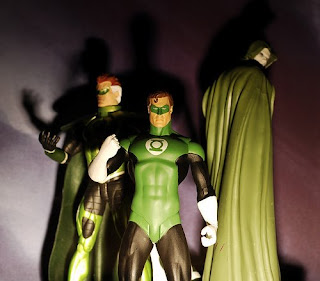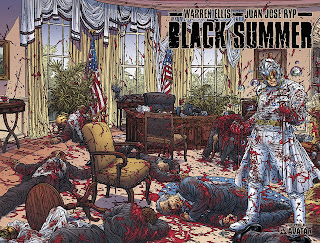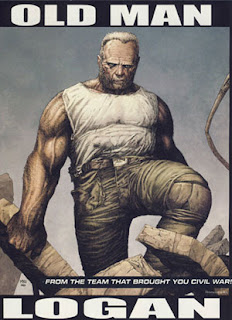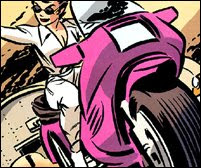
Before getting into my thoughts on
52 (which I just finished reading last night), I want to follow-up
a bit on yesterday's post. In
her review of Final Crisis: Legion of 3 Worlds #2, Nina Stone writes:
After reading this, I feel the fraternity vibe that I got out of that Baltimore panel more than ever. I'm sure their fans are very happy, and they probably should be. This has to be writing that's specifically for them. This is a comic book for DC fans, god, it felt like a love letter to DC fans. If I were to try and judge DC by this one comic book, this Mardi Gras of characters and confusion, they don't want new readers. They just want their current readers to stay, to have babies with them, to buy land. They aren't interested in pledges. Initiation is over. The club is closed.
I want to step back and do a bit of a "thought experiment" here.
Let's say I read chapter 5 of
Harry Potter and the Deathly Hallows and wrote a review of it that made the same kind of point that Nina is making. I might say: "Based on this chapter, I get that sense that this must be written specifically for Harry Potter fans. I'm sure people who have been following Harry Potter for years are very happy with this chapter, but I don't get the sense that Rowling is looking for new readers. It's like if you haven't already read the other six books and the first 4 chapters of this one, chapter 5 is not meant for you."
Now, this isn't meant as a direct analogy. There are
lots of differences between this random
Final Crisis spin-off issue and this random Harry Potter chapter. But I think we can say that reading a random chapter from one of the last books in a long-running fantasy series is not the best way of engaging with that material. I'd go further and say that you'd be acting in bad faith if you were basing your generalizations about Harry Potter on that one random chapter, because - obviously - you
know you're supposed to start a book series with the first book and a book with the first chapter.* And - equally obviously - the fifth chapter of the seventh book probably
shouldn't be welcoming to new readers.** I mean, it might be, but I'd think that would start to get a little annoying if each and every chapter Rowling gave us enough info so that it would function as a stand alone reading experience.
Here's where we get to the differences, though:
If I want to get up to speed with Harry Potter so I can fully understand what's going on in chapter 5 of
Deathly Hallows it is easy for me to do so. All I have to do is read the first six Harry Potter books (whose titles are conveniently listed at the beginning of the seventh) and the first four chapters of
Deathly Hallows. I can probably pick them all up during a single trip to the bookstore.*** In Nina's terms, this would be an easy club to join.
With
Final Crisis: Legion of 3 Worlds, things are a lot trickier. There is no "first book, first chapter", no easy reading list. In fact, even being able to
figure out what books you'd have to read to understand what's going on it would take a fair amount of knowledge of DC super-hero comics to begin with. Aside from the completely impractical (not to mention insane) plan of reading
all of National/DC's super-hero publications from
Action Comics #1 on (and all of the publications from companies that National/DC would go onto to buy up and incorporate into their Mythos), there's no "official" set path to get from knowing nothing about DC super-heroes to being able to understand
Final Crisis: Legion of 3 Worlds. Not only is this different from Harry Potter, where there's only seven books and no doubt about what order to read them in, it's different from Star Wars and Star Trek, which despite all of the "expanded universe" fiction have a core canon that you're expected to start with and can safely stay within. (The same goes for Tolkien).
Nina puts this in terms of DC not being interested in anyone else joinging the club, but, as I suggested in my last post, I don't think that's quite it. While it's true that there's a higher barrier to entry here than with Harry Potter (or
House), that barrier is a necessary part of these comics working in a different way than Harry Potter (or
House) works.
What's important to me, though, is not that these comics take
more work to appreciate - that they're more exclusive - but that everyone's initiation process is different and everyone's iniation process is "self-directed". I
don't like to give out a "reading list" to my friends who are, say, interested in reading
52 or catching up with
Final Crisis, because part of the fun of the DC Mythos is that you get to find your own way into it. For me that process included collecting a lot of titles featuring second-or-third string heroes (the '80s
Blue Beetle and
Blue Devil series, the Wally West
Flash), following certain writers who resonated with me (Keith Giffen on
Ambush Bug and on
Justice League), reading my friends' copies of the big cross-over events, filling in the gaps in my knowledge with
Who's Who, etc. I'm not sure at what point I was "in the club", but after a while, just by following a mostly random process, I had enough knowledge of the DC Mythos (and enough investment in it) that the more intricate, convoluted stuff really worked for me.
Which brings me to
52...
I had originally thought of posting commentary every six issues or so, but decided not to because (a) I ended up reading a bunch at a time and the details of the individual issues kept slipping from my mind and (b) I was also reading along with
Douglas Wolk's 52 Pickup blog, which seemed to cover most of the ground commentary-wise. So what follows is my "big picture" take.
I liked this series a lot, up through somewhere in the mid 30s when I started to have serious doubts that they'd be able to resolve everything in anything like a satisfactory manner. And I think my doubts were justified: to build
on James' comments on my last post,
52 starts out promising a
broad - if not deep - exploration of the DC Universe, but ends up, Pokemon-style, doing little more than setting up a bunch of spin-offs. Now, these big even series are always concerned with creating successful spin-offs. I don't mind that kind of commercial motive - all popular art works under some kind of commercial restriction - but in the case of the last quarter of
52 the story starts working less in terms of character, action, and theme and more in terms of getting everything in place for the sequels. I got the sense of the creators running out the clock until the final issue, which tries to fit in about 6 issues worth of exposition/explanation.
Still, the early part of the series
is really good and there are great moments throughout. Wolk's commentary seems pretty definitive to me, but I'd point out that reading it all in one chunk, rather than having an entire week to devote to 20-or-so pages probably made me a lot more forgiving of some of the storytelling fumbles. The unforgivable one deals with the reveal in the Elongated Man storyline, which (as Doug points out) is a total cheat.
Ultimately, I think I liked what
52 promised more than what it delivered, which is why I was more gung ho about it back in
this post, when it was still making promises. Doug Wolk's Week 52 post really gets at the heart of why I was let down by the ending: most of the characters end up in the same place they started in. You can't say that about
Infinite Crisis, which doesn't have as good a critical reputation as
52, but, IMO, is the better series.
IC was all over the place (in a lot of ways), but it did, at least, provide a real ending and it never felt like the creators were just treading water.
*Unless you're doing some kind of surrealist take on reviewing fiction.
**Granted: there are lots of different kinds of serial fiction. Not all of it works like Harry Potter. But a lot does.
***It might be harder to track down books in an out-of-print series (I might have to go to exlibris or something), but it would still be pretty easy to know which books I'd have to look for.










